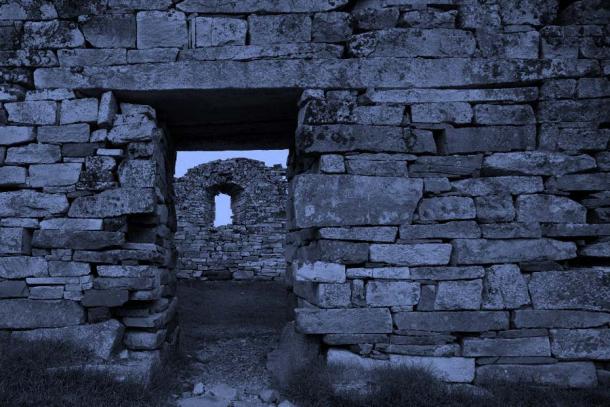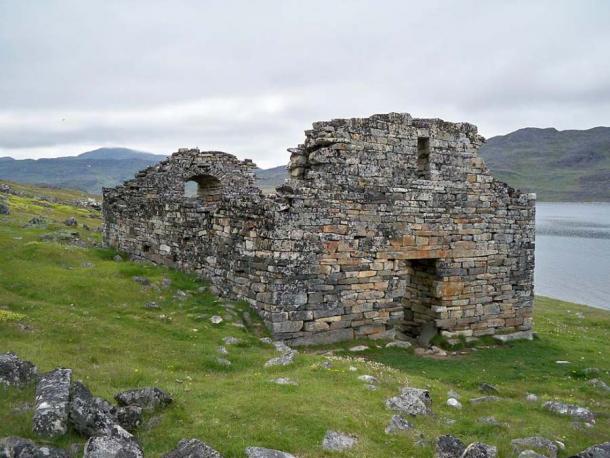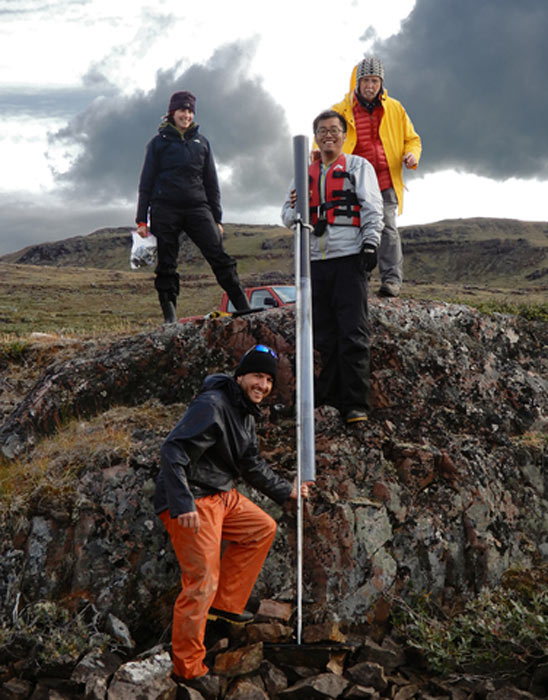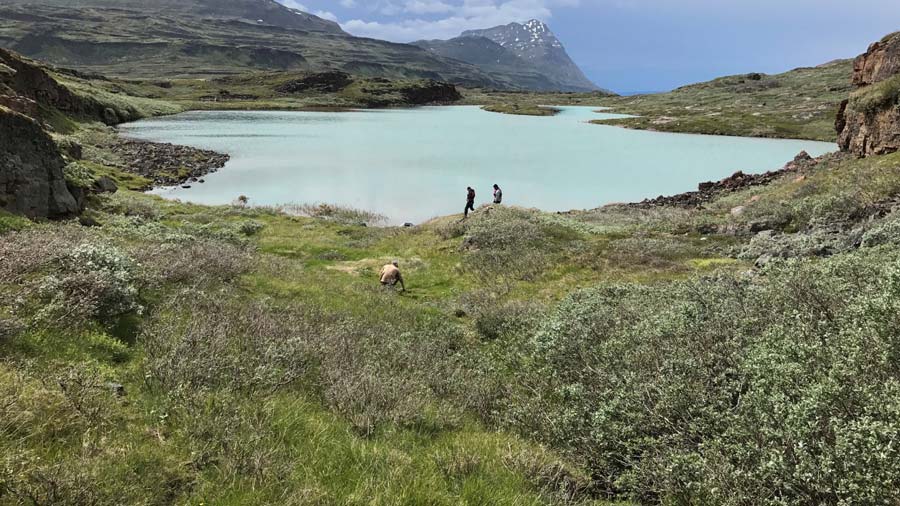A Prolonged Drought Drove Out the Greenland Vikings, Says New Study
European Nordic seafaring pirates and raiders, known as the Vikings, would come to Greenland to settle around 950 AD, but mysteriously the Greenland Vikings vanished with the onset of the Little Ice Age, which lasted from the early 14th century to the mid-19th century. A new study by a group of scientists from University of Massachusetts Amherst (UMass) and other institutions, published in Sciences Advances, suggests that it was, in fact, a prolonged drought that led to the rapid disappearance of the Greenland Vikings.
Scientists at Smith College and the University at Buffalo also contributed to this research, which was supported by the National Science Foundation, UMass, the Geological Society of America, and the Swiss National Science Foundation, according to the press release from UMass.

We know the Greenland Vikings settled in two places and that these settlements persisted for 400-450 years, but no one has ever proven why they left and never returned. This image is a closeup of the church at the Greenland Vikings last known settlement at Hvalsey, Greenland. (Paul / Adobe Stock)
What We Know About the Greenland Vikings
The Vikings originated from the area today known as Scandinavia, Denmark, Sweden, Norway, and are historically remembered as seafaring pirates, plunderers, and settlers of new lands.
They operated between the 8th and 11th centuries AD and settled throughout parts of Europe (going as far as the UK), North Africa, and Mediterranean Sea area,. They also voyaged as far as North America and Western Asia. The Greenland Vikings established two outposts, the Eastern Settlement along the southwest coast, and the Western Settlement, which was a small colony further up north.
- Beyond Violence: Examining UK Viking Families and their Artifacts
- Burning, Pillaging, and Carving up the Lands: Viking Raids into England - Part II
Speaking of Greenland’s Lake 578 site, “Nobody has actually studied this location before,” said study lead author Boyang Zhao, a postdoctoral research associate at Brown University in Providence, Rhode Island.
For the Eastern Settlement, where records of settling began in 985 AD, the Norsemen cleared land and shrubs, and planted grass pastures for their livestock. The settlement’s population peaked at 2,000 inhabitants but collapsed fairly quickly about 400 years later. Europeans would only return to Greenland in the 18th century.
“Before this study, there was no data from the actual site of the Viking settlements,” said study author Professor Raymond Bradley at UMass Amherst. “And that's a problem.”
The sudden disappearance of the Greenland Vikings has long been one of medieval history’s great mysteries. Until the recent study, the running narrative has been that the Greenland Viking colonies declined and ended due to the Little Ice Age. This period of regional cooling lasted from the early 14th century to the mid-19th century (with some experts holding to slightly different dates). The latest study challenges the Little Ice Age narrative by showing that what the Greenland Vikings actually encountered was a prolonged drought.

The last written records of the Norse Greenlanders are from a 1408 marriage at Hvalsey Church, pictured here. (Number 57 / CC0)
Declining Temperatures and the Little Ice Age Narrative
The authors of the paper write:
“Declining temperature has been thought to explain the abandonment of Norse Settlements, southern Greenland, in the early 15th century. Here we reconstruct the temperature and hydroclimate history from lake sediments at a site adjacent to a former Norse farm. We find no significant temperature changes during the settlement period but rather that the region experienced a persistent drying trend, which peaked in the 16th century.”
To understand the variation of the climate in close proximity to the Greenland Vikings’ farms, the team travelled to a lake called Lake 578, adjacent to a former Norse farm which itself is located amongst a cluster of large farms in the Eastern Settlement. This process began in early 2019 and was characterized by three years of gathering sediment samples from the lake which represented a continuous record of the past 2,000 years.
These samples were analyzed for two separate markers, a lipid known as BrGDGT, which can be used to reconstruct temperature, and a second marker, derived from the waxy coating on plant leaves. This helped in determining the rate at which grasses and other livestock-sustaining plants lose water due to evaporation, thus serving as a clear indication of how arid or dry the environment was.
“If you have a complete enough record, you can directly link the changing structures of the lipids to changing temperature,” said Isla Castañeda, Professor of Geosciences at UMass Amherst, and one of the paper's co-authors.

The field group behind the latest research on the disappearance of the Greenland Vikings taking a lake sediment core from Lake SI-102, southern Greenland. (William Daniels / UMass)
What They Deduced, and How We Move Forward
The study revealed that temperatures remained mostly stable throughout the Greenland Vikings’ period, but that overall rainfall decreased steadily over time. The impact of this cannot be understated. With less rain over time, harvests would not be as successful, resulting in total depletion of animal fodder surpluses.
- Smell Like a Viking - The Viking Odor Was Strangely Superior!
- Lost Norse of Greenland Fueled the Medieval Ivory Trade, Ancient Walrus DNA Suggests
Over time, the animals of the Greenland Vikings began to suffer as the drought continued. They even had to be carried to areas that happened to shed ice water when the spring and summer came around. This shifted the balance, and along with other socio-economic pressures, made the settlement unsustainable in the long run. There was a change in diet too: less reliance on land animals, and more on marine animals, which was an unsustainable exercise unto itself, due to more danger and less reliable yields, the study authors noted.
This is a landmark study for a number of reasons. For one, it challenges the established dominant Little Ice Age narrative. But the study also shows how environmental factors over the long term affected the Greenland Vikings’ settlements. Finally, this study tells us a little bit about what we can expect in the coming decades and centuries as global warming and climate change begin to have serious consequences for other societies across our fragile planet.
Top image: Greenland’s Lake 578 site was one of the sites where core samples and other data were taken that showed evidence of a prolonged drought. “Nobody has actually studied this location before,” said study lead author Boyang Zhao, a postdoctoral research associate at Brown University in Providence, Rhode Island. Source: UMass
By Sahir Pandey
References
Chadwick, J. 2022. The Vikings left Greenland in the early 15th century due to DROUGHT - not falling temperatures as previously thought, study finds. Available at: https://www.dailymail.co.uk/sciencetech/article-10644301/Vikings-left-Greenland-15th-century-drought-study-says.html.
Zhao, B., Castañeda, I. S., et al. 2022. Prolonged drying trend coincident with the demise of Norse settlement in southern Greenland. Sciences Advances, 8 (12). Available at: https://doi.org/10.1126/sciadv.abm4346.



















